TRACTRIX SPIRAL
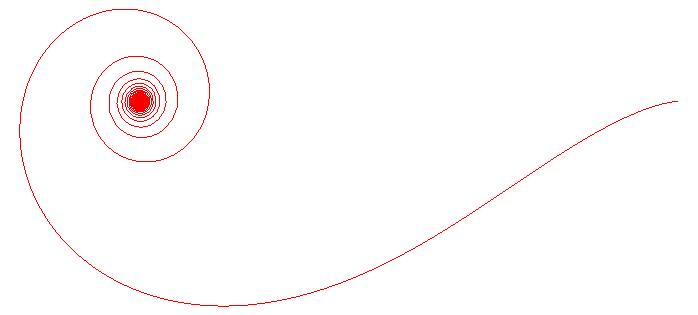
| next curve | previous curve | 2D curves | 3D curves | surfaces | fractals | polyhedra |
TRACTRIX SPIRAL

| Curve studied by Huygens, Varignon in 1704 and Cotes in 1722.
Name given by G. Teixeira. Other names: polar tractrix, complicated tractrix. |
Differential equation:  . .
Polar parametrization: 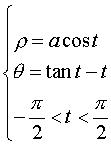 (note the similarity to the parametrization of the tractrix).
(note the similarity to the parametrization of the tractrix).
Polar equation: Transcendental curve. Polar tangential angle: Curvilinear abscissa: Radius of curvature: Intrinsic equation 1: |
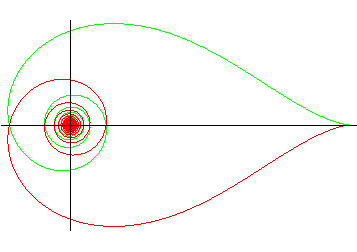 |
The tractrix spiral is the curve with constant polar tangent (whereas the tractrix is the curve with constant Cartesian tangent).
| The middle of the polar tangent |
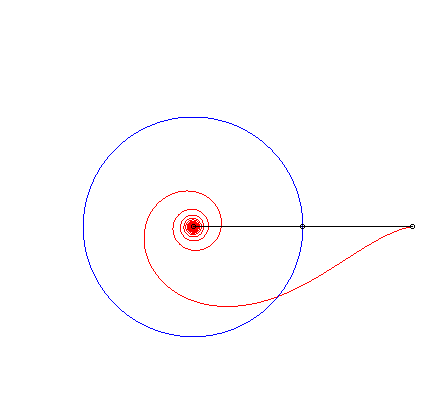 |
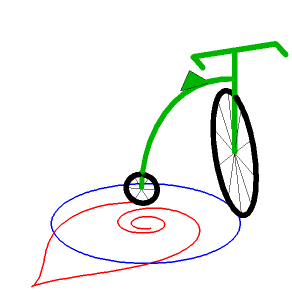 |
It is also the inverse of the involute of a circle with respect to its centre, as well as the negative pedal of the hyperbolic spiral with respect to its centre.
| When the tractrix spiral rolls on a tractrix, so that the cuspidal points coincide, then the pole describes a line (see also at wheel-road couple). | 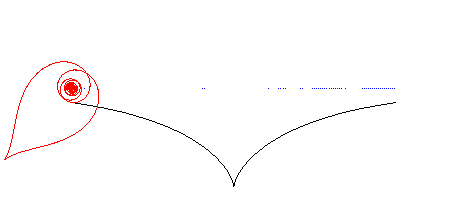 |
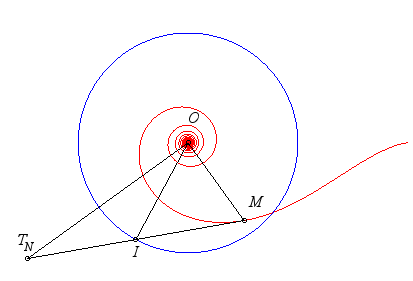 If, in the figure above representing the constant polar tangent, we consider the frame linked to M and I, with a constant length OI, then the relative motion of O around I is circular.
This property was used to determine the shape to give to rods that guide the gates of some canals. See also the Catalan curve, evolute of the tractrix spiral, which is therefore a solution to the problem of the circular roulette.
|
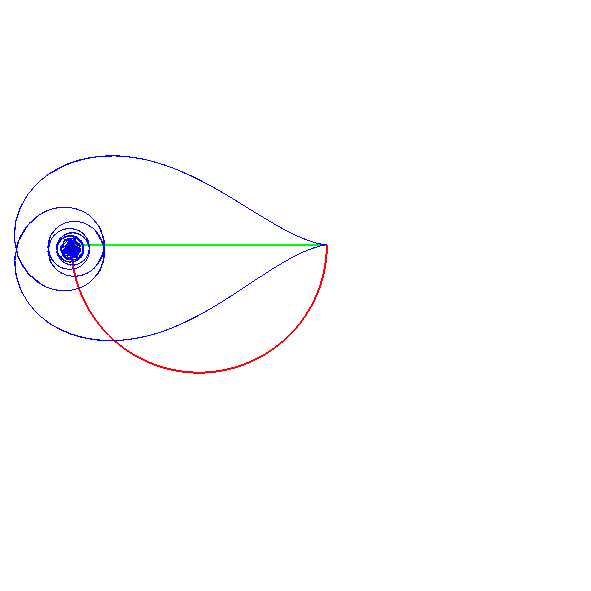 |
| next curve | previous curve | 2D curves | 3D curves | surfaces | fractals | polyhedra |
© Robert FERRÉOL 2017